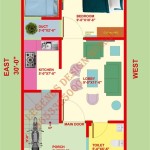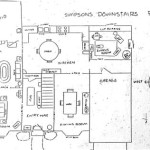Essential Aspects of Tiny Log Cabin House Plans
Tiny log cabins offer a rustic and charming refuge with an enchanting ambiance. Crafting one from scratch requires meticulous planning. Here are some essential aspects to consider when embarking on your tiny log cabin adventure:
Foundation and Framing
The foundation is the cornerstone of any structure. For tiny log cabins, concrete piers or concrete footings are suitable options. The framing, typically constructed from logs or timbers, determines the structural integrity and layout of the cabin. Logs can be notched, dovetailed, or saddle-notched to create sturdy joints.
Log Selection
Log selection plays a vital role in the cabin's aesthetics and durability. Pine, spruce, and fir are popular choices for their affordability and strength. Logs should be seasoned or kiln-dried to minimize moisture content and prevent shrinkage or warping.
Roofing
The roof protects the cabin from the elements. Metal, shingles, or shakes are common roofing materials. The roof pitch affects the cabin's overall appearance and drainage capabilities. Proper insulation ensures thermal efficiency in all seasons.
Windows and Doors
Windows and doors provide natural light and ventilation. Double-paned windows improve energy efficiency. Choose doors designed for heavy use to withstand the elements. Consider the placement of windows and doors to optimize natural light and views.
Interior Design
The interior design of tiny log cabins should maximize space and create a cozy ambiance. Utilize built-in furniture, lofts, or multi-purpose spaces to save room. Natural materials such as wood and stone complement the rustic charm of log cabins.
Utilities
Tiny log cabins require essential utilities like electricity, plumbing, and heating. Consider off-grid systems such as solar panels, wind turbines, or rainwater collection for sustainable living. Proper ventilation is crucial to prevent moisture buildup.
Site Selection
The location of your tiny log cabin is paramount. Choose a site with good drainage, access to amenities, and stunning views. Consider the surrounding environment and its potential impact on the cabin's privacy and energy efficiency.
Planning and Permits
Thorough planning is essential before embarking on any construction project. Secure necessary permits and consult local building codes. Detailed blueprints, including floor plans and elevations, are indispensable for a successful build.
Sustainability
Sustainability should be a priority in tiny log cabin construction. Utilize recycled materials, non-toxic finishes, and energy-efficient appliances. Consider green building techniques, such as passive solar design or geothermal heating, to minimize environmental impact.
Customization
Tiny log cabins offer endless customization possibilities. Incorporate personal touches, such as custom carvings, unique windows, or an outdoor fireplace, to create a cabin that truly reflects your vision and lifestyle.
Enjoy the Journey
Building a tiny log cabin is a rewarding adventure. Embrace the process, appreciate the beauty of nature, and savor the unique experience of creating a handcrafted sanctuary.

Tiny Houses Living Large Southland Log Homes

Tiny Log Cabin Kits Easy Diy Project Small Cabins

Pin By Merrilyn M On House Tiny Cabin Plans Small Log

Tiny Houses Living Large Southland Log Homes

Tiny Log Cabin Kits Easy Diy Project House Design Plans

Tiny Log Cabin Kits Easy Diy Project House Prefab Kit

Tiny House Plans Little Log Cottages

Tiny Log Cabin Kits Easy Diy Project Craft Mart

Tiny Log Cabin Home 1 Bdrm Bath 689 Sq Ft Plan 132 1107

Log Cabin Floor Plans House








